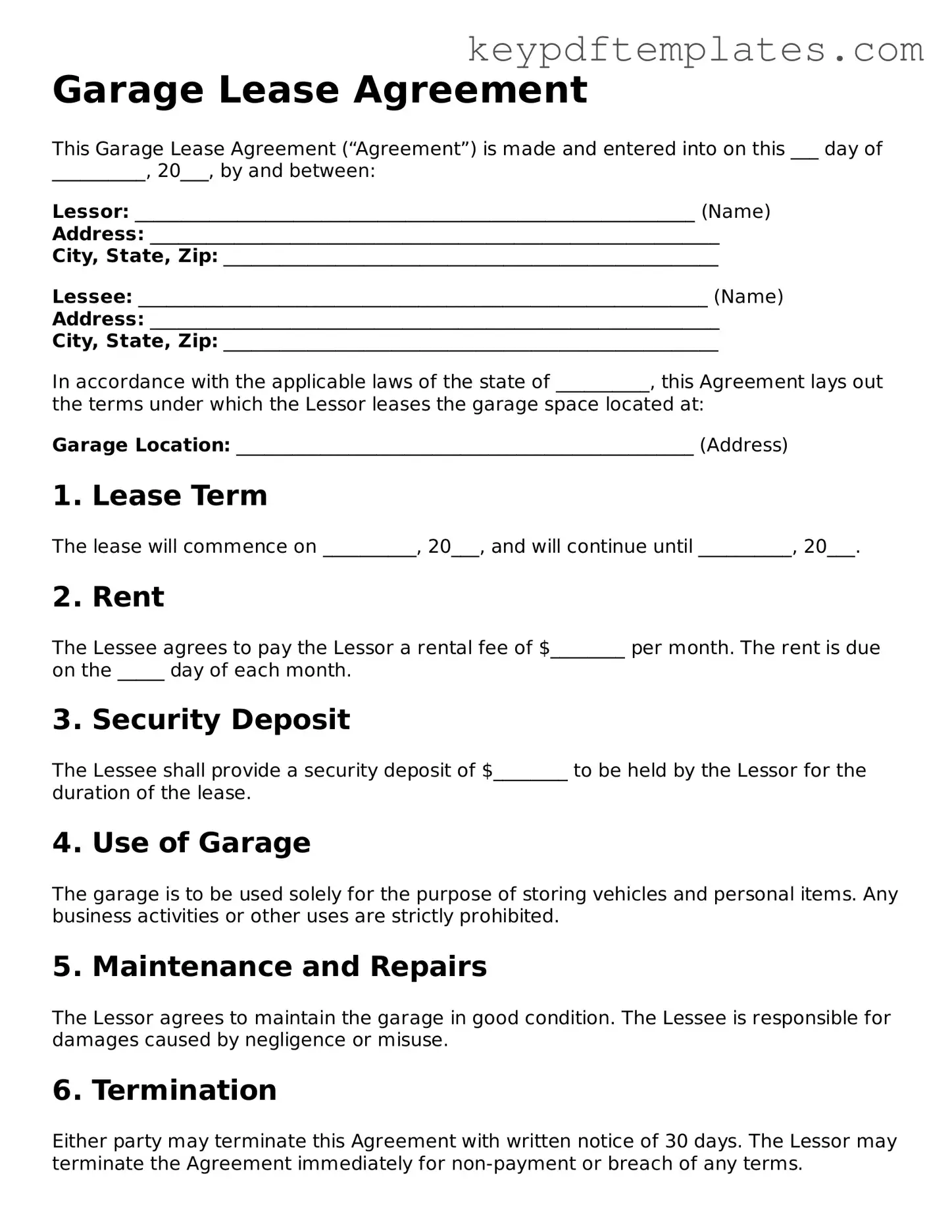Printable Garage Lease Agreement Template
A Garage Lease Agreement is a legal document that outlines the terms and conditions under which one party leases a garage space to another. This agreement typically includes details such as rental price, duration of the lease, and responsibilities of both the landlord and tenant. Understanding the components of this form is essential for both parties to ensure a smooth leasing experience.
Modify Document Online
